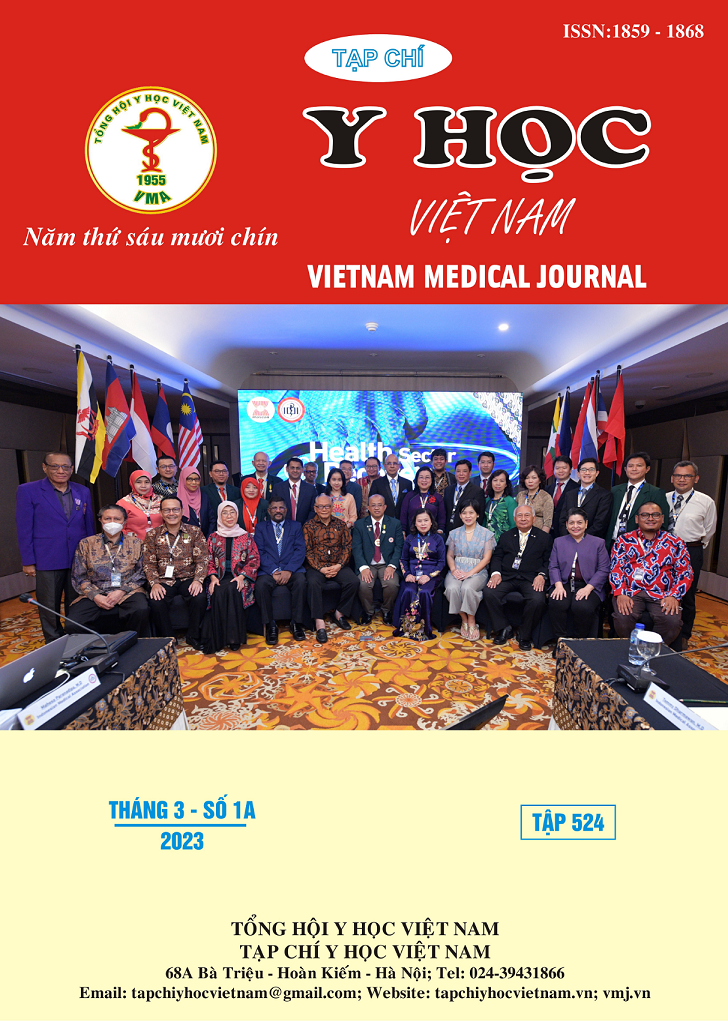OUTCOME EVALUATION FOR TREATMENT OF ACUTE ACROMIOCLAVICULAR JOINT DISLOCATION BY HOOK PLATE WITHOUT CORACOCLAVICULAR LIGAMENT RECONSTRUCTION
Main Article Content
Abstract
Background: Acromioclavicular joint (ACJ) dislocation is one of common shoulder injuries, but there is no consensus on conservative treatment as well as surgical technique options. Reduction and fixation with hook surgery has been found to be effective in treating acute ACJ dislocation, however, there are very few studies evaluating the results of this method. Objectives: The study was to survey outcomes evaluation of treatment acute ACJ dislocation by internal fixation with lock hook plate without coracoclavicular ligament reconstruction. Materials and methods: This was designed a prospective clinical study. All patients were diagnosed with ACJ dislocation grade III, IV, V, VI according to Rockwood classification were assigned surgical treatment with hook plate at Can Tho Central General Hospital in 2020-2022. We recorded the general characteristics of patients, radiographical findings and treatment outcomes. Results: 42 patients (32 men/10 women, 44.3 y) were included in the present study. The ACJ dislocation grade V was majority rate. The average surgery time was 62 minutes. The result of reduction ACJ was 100%. The functional results according to the Constant-Murley Score increased from 33.7 ± 5.6 before surgery to 88.9 ± 5.3 at the time of last follow-up, the CS level achieved 100% good to excellent. The main complication was subacromial osteolysis with four patients. Satisfaction level of patients were 97,6% very satisfied and satisfied. Conclusion: Reduction and fixation surgery with lock hook plate in the treatment of acute ACJ dislocation (<3 weeks) is one of the good methods with the ability to reduce and rehabilitate good function of the joint, so that the patients can return to activity and work soon.
Article Details
Keywords
Acute acromioclavicular joint dislocation, hook plate.
References
2. Vũ Xuân Thành (2020), Nghiên cứu kết quả điều trị trật khớp cùng đòn bằng tái tạo dây chằng quạ đòn, Luận án Tiến sĩ y học, Đại học Y Dược Tp. Hồ Chí Minh
3. Frederick M. Azar, James H. Beaty and S. Terry Canale (2017), "Acute dislocations", Campbell's Operative Orthopaedics, 13th, pp. 3127- 3132
4. Gowd Anirudh K, Liu Joseph N, Cabarcas Brandon C, Cvetanovich Gregory L, Garcia Grant H, and et al. (2018), "Current concepts in the operative management of acromioclavicular dislocations: a systematic review and meta-analysis of operative techniques", The American journal of sports medicine, pp. 1-14.
5. Hemmann P., Koch M., Gühring M., Bahrs C. and Ziegler P. (2021), “Acromioclavicular joint separation treated with clavicular hook plate: a study of radiological and functional outcomes”, Archives of orthopaedic and trauma surgery, 141(4), pp. 603–610.
6. Paul Tornetta III and et al (2020), "Acromioclavicular and Sternoclavicular Joint Injuries", Rockwood and Green's fractures in Adults, 9th, pp. 1517 – 1616.
7. Sirin E., Aydin N. and Mert Topkar O. (2018), "Acromioclavicular joint injuries: diagnosis, classification and ligamentoplasty procedures", EFORT Open Rev, 7, (3), pp. 426-433.
8. Turgut M. C., Semis H. S., Yamak K., et al. (2022), “Evaluation of Patients with Acromioclavicular Joint Separation Treated Using the Clavicular Hook Plate”, Ortop Traumatol Rehabil, 24, (2), pp 73-78.


